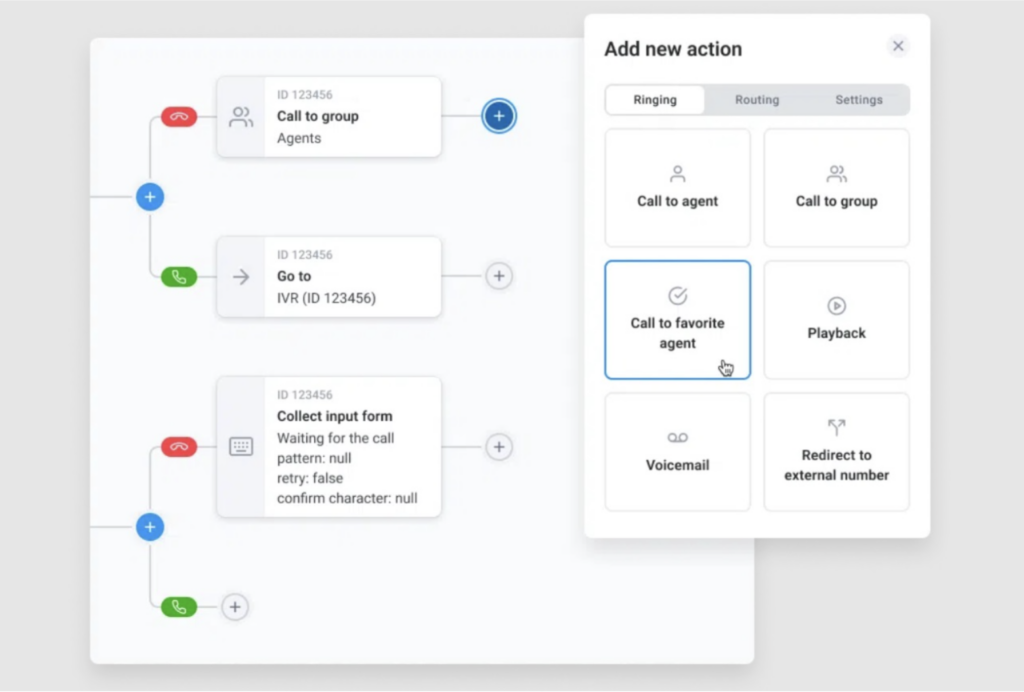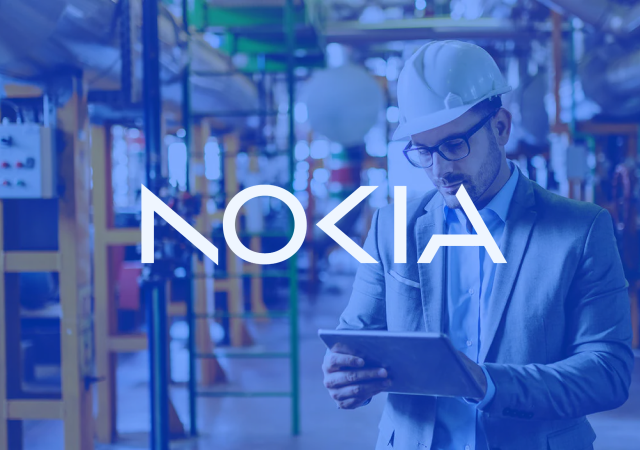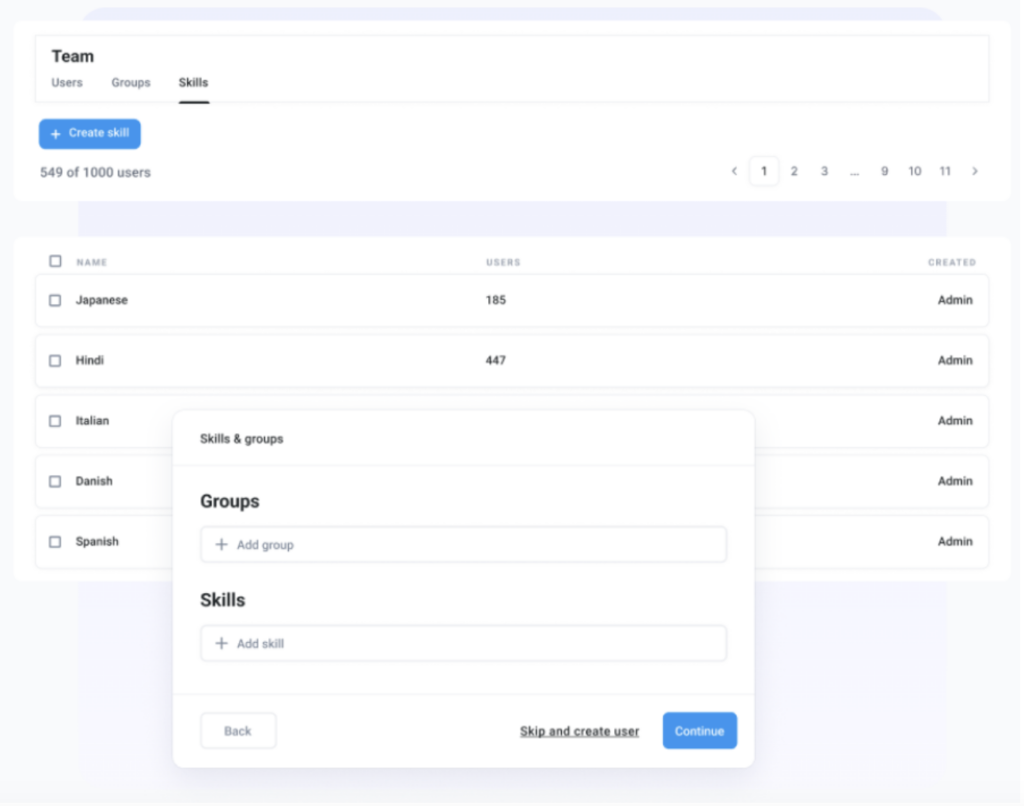How to Improve Call Center Agent Performance

Did you know that 58%* of US customers are happy to pay more if a brand can provide a better customer experience? And that a bad customer service experience can cause up to 78%** of consumers to back out on an intended purchase?
That’s why offering excellent call center performance and customer service is crucial. It’s not just a “nice to have”; it’s necessary for your bottom line and sales.
But improving contact center performance can feel overwhelming. What do you actually focus on? Which metrics should you start with, and how can you translate these goals into everyday call agent actions?
We’ve laid out the most important metrics to track, followed by our top tips for enhancing agent productivity, improving customer satisfaction, and increasing revenue — all without disrupting business operations.
Let’s take a look.
Key takeaways:
- Call center agent performance starts with measuring relevant metrics to accurately track improvement. You also want happier customers, lower costs, better reputation and client trust, and increased sales and revenue.
- Some of the best ways to improve call center performance is by setting reasonable goals, providing continuous training, creating a knowledge base, offering self-service channels, employing skill-based routing, personalizing call scripts, and offering constructive feedback.
- Using leading call center software like CloudTalk is also crucial, as it gives your team the best tools they need to maximize performance and productivity.
Get rid of missed calls and improve customer service with CloudTalk
*Forbes, 2022
**ShipStation 2023 report via Business Wire
How to Measure Call Center Agent Productivity
Aiming to “improve call center performance” is a great goal, but it’s a little vague. The only way to tell if your efforts are truly working is to track changes using measurable call center metrics or KPIs (key performance indicators).
Call center agent productivity spans two types of improvement. Firstly, basic call data (such as the number of calls taken or missed). Secondly, the ultimate results (such as the number of happy customers, number of sales, or problems solved on the call).
The good news is, if you improve the first, the second will follow. Some of the most relevant metrics to track include:
ATT = (Total handling time – total hold time – total wrap-up time) / Number of calls handled
Average talk time (ATT): The average time on the call that is spent “talking”. It’s calculated by subtracting the total hold time and wrap-up time from the total call length, divided by the number of calls. On its own, this doesn’t tell you much, but it can offer insights along with other metrics.
FCR = (Number of inquiries resolved on the first call / Total number of inquiries) x 100
First Call Resolution (FCR): The number of customer calls that are resolved the first time the caller contacts you, meaning they don’t need to call back. High FCR rates, along with high promoter scores, suggest productive agents, a good routing process, and happy customers.
AHT = Total handle time / Total number of calls
Average handle time (AHT): The average amount of time of the entire call, including agent research time and wrap-up, divided by the total number of calls.
NPS = Percentage of promoters (scores of 9 or 10) – Percentage of detractors (6 or below)
Customer satisfaction score: A standardized metric that measures customer satisfaction based on the question: “On a scale of zero to ten, how likely are you to recommend our product/service to a friend or colleague?” A higher score suggests better customer service. People who score 9 or 10 are considered “promoters”, 7-8 are “passive”, and 6 or below are “detractors”.
Other useful metrics include:
- Talk/Listen Ratio: The ratio between how much the agent talks, compared to the caller.
- Number of calls taken: The number of incoming calls that an agent successfully answers.
- Number of missed calls: Number of calls missed, and why.
Benefits of Tracking Performance KPIs
Tracking performance KPIs is the best way to bring the “SMART principles” to your call center improvement process. This famous acronym says that goals are most achievable when they are Specific, Measurable, Achievable, Relevant, and Time-Bound.
Setting SMART KPIs makes it much more likely that you will succeed in your call center improvement efforts. Which is good news for your business.
Some of the major benefits of tracking and improving call center performance via KPIs include:
- Happier customers: More efficient and experienced agents offer better customer support and help callers out more quickly, professionally, and effectively. This way, customers get the answers they need, fast, with minimal stress, time, or frustration.
- Lower costs: Automated processes and specialized tools, including chatbots, enhances efficiency, so you can optimize your team as it takes on more inbound and outbound calls. Streamlined working practices with AI-driven data also boosts job satisfaction, facilitates better training, and leads to better staff retention.
- Better reputation and trust. Happier customers and better customer service leads to better reviews and more positive word of mouth recommendations.
- Increased sales and revenue. Ultimately, happier customers and a better reputation leads to more business, higher sales, and increased revenue.
8 Tips to Improve Call Center Agent Performance
Skyrocket your call center agent performance with these nine top tips.
1. Use the Right Call Center Software

Even the best call center agent in the world will struggle to reach their highest potential without the tools to do it — or worse, with a tool that’s actively hindering them.
Leading call center software, such as CloudTalk, includes features that make agents more productive, helpful, and responsive. These include easy call transfers, time-saving call center automation, pre-recorded voicemails, streamlined queues, missed call monitoring, automatic call recording, and auto-transcription.
CloudTalk also has specialized tools like AI-powered Sentiment Analysis, for immediate feedback on calls; Call Flow Designer (see image above) to better respond to customers’ needs; and Power Dialer to help agents reach 3x more customers in less time by removing repetitive tasks.
Agents still need to put in the work to improve — but quality call center software gives them the tools they need to maximize success.
Discover the Future of Conversations
2. Set Reasonable Goals and KPIs
Ambition is great, but it’s better to set reasonable goals when working to improve your call center agent performance.
Set your KPIs too low, and improvement will be too slight. Set them too high, and you risk demoralizing your team, falling short of goals, and missing the chance to celebrate the small-but-significant steps you’re making along the way.
Setting continuous “stretch” goals (attainable targets outside of an individual or team’s comfort zone) will eventually add up to one giant leap forward. Be sure to acknowledge and reward your agents for hitting these goals along the journey, to create a culture of continuous, forward momentum and insightful action.
The best call center software will help you manage and improve your KPIs. For example, CloudTalk’s Analytics feature automatically records key data and shows you a 360-degree view of what’s happening in your teams. Meanwhile, a Real-Time Dashboard monitors activity as it happens, so you can tweak metrics on-the-go.
3. Use IVR to Segment Customers
Using interactive Voice Response (IVR) helps improve your call center agent performance by ensuring that callers are put through to the right professional even before the agent answers. Customers say what they’re calling about first, sending themselves to the best-placed agent.
This ensures:
- Your agents start the call off on the right foot as they have the best knowledge to help.
- Customers get better service because they don’t have to repeat themselves. Instead, they’re connected to the agent who can help them best.
- You save costs on extra staff as your call routing system is much more efficient, enabling agents to help customers with more issues, much faster.
In fact, using IVR can cut call duration times by as much as 40%.
4. Invest in Continuous Agent Coaching and Training
Agents can learn a lot while working “on the job”, but for the best performance and improvement, continuous coaching and training is also highly recommended.
This is particularly suitable for agent teams with high turnover of staff (so there are always new hires who need to learn), and for teams who will benefit from regular refreshers of the most important content.
Continuous training doesn’t have to take agents away from their roles or require entire days of separate workshops, however.
With software like CloudTalk you can use agents’ day-to-day actions as part of this training. For example, with features like Call Monitoring, you can listen in to calls and discreetly offer agents help when needed. Additionally, with Agent Reporting, you can track agent KPIs, and identify areas where your agents could improve in real-time for data-driven coaching based on your agents’ real abilities and skill gaps.
As Nelly Donnelly, service delivery manager at tech company Nokia, and CloudTalk customer, says: “With CloudTalk’s Analytics, I now get to see every step of the way. We can find discrepancies between our agents and gain a much better understanding of our teams’ setup.”
Nokia found that using CloudTalk helped boost its agent productivity by 10%.
What did Nokia achieved with CloudTalk?
- 30% Increase in outbound success rates
- 10% Increase in agent productivity
- 25% Decrease in leads lost

5. Create a Knowledge Base
Creating a knowledge base for your product or service is an excellent way to improve call center agent performance, and help your team and clients overall.
A public knowledge base can help you:
- Showcase true expertise and customer service clout to your customers. They will have a permanent “library” of reference for all the most common issues and frequently asked questions. This makes your website super-helpful, without requiring any more agent hours.
- Boost call center agent performance overall. New agents can use it as a source of truth for their own learning, and more experienced staff can revisit it to remind themselves of the best practices.
- Unify responses to callers. This will ensure everyone gets the same, correct advice, and makes your team appear more professional and clear.
You could even task your call center agents with creating their own pages in the knowledge base. This not only adds to it, but also ensures agents brush up on their knowledge, and learn to explain processes step-by-step.
6. Offer Self-Service Channels and Chatbots
Implementing a chatbot or self-service channel will have the multi-pronged effects of:
- Helping more customers in less time, as they’ll find the answer they need without waiting to speak to a real-life agent. Studies even suggest that the majority of customers (including 62% of millennials and 75% of Gen-Z customers) prefer self-service almost all the time, even when they have the option to contact support.
- Freeing up agents to help customers who need specific, more complex help that a chatbot can’t handle. Research shows that chatbots can take away 30% of agents’ tasks, giving them more time to focus on the customer experience.
This gives your agents a chance to step up, improve and show off their product or technical knowledge when it counts. Plus, they’ll have the added confidence of knowing their expertise is recognized, and worth more than a bot.
7. Use Skill-Based Call Routing
Skill-Based Routing ensures calls are directed to the most capable agent, with the best skills to help the customer. This improves:
- Efficiency. Agents can transfer calls quickly and spend less time dealing with issues they don’t know enough about.
- Customer satisfaction. Callers get the answers they need from a knowledgeable team member faster.
- Agent expertise and ability. Agents can become real experts in their chosen skills and hone their knowledge deeply on a few particular areas.
- Operational costs. With less need for callers to repeat themselves, and less risk of them being handed from agent to agent (taking more time), your staff costs will lower accordingly.

Pro Tip
CloudTalk’s Skill-Based Routing Feature streamlines call handling, reduces call transfers, optimizes resource usage, and decreases operational costs.
8. Help Agents Make Call Scripts Their Own
Enabling your agents to connect more closely with call scripts and product information means that they will:
- Engage more with the content
- Relay it better to clients
- Appear more helpful and friendlier to clients
- Improve their performance and productivity overall.
Help your agents see their call scripts as a starting point. Be clear about what they must say, and ensure professionalism and politeness, but also empower them to let their own style and personality come through.
For example, they can change words or expressions they wouldn’t say, or tweak phrases so they sound more natural to them. This will make them feel more comfortable, and improve their confidence with customers and when using new software.
9. Offer Feedback
Continuous training, call center monitoring, and coaching goes hand in hand with offering feedback to your agents, as they put the coaching into practice.
Best practices include:
- Offering feedback as part of a regular process
- Giving positive comments as well as “areas to improve”, to ensure you don’t only offer feedback as criticism, or if there is something wrong.
This helps make feedback as constructive and helpful as possible. It also helps to foster a culture of continuous learning and improvement in your call center, rather than making agents feel attacked or undermined when they receive feedback.
Pairing in-house and customer feedback with acknowledgement of everyday “wins” will mean your agents will come to welcome it, and see it as evidence of their effort, learning, and improvement.
Improving Call Center Performance: The Steps to Success
Delivering exceptional call center performance is crucial for increasing sales, but it can feel overwhelming. It requires a clear focus on key metrics and the translation of goals into actionable steps for agents. By enhancing these core performance indicators, businesses can boost customer satisfaction, lower costs, and improve agent effectiveness.
Utilizing powerful software like CloudTalk and investing in ongoing training play vital roles in achieving these performance goals. This approach enhances overall agent efficiency and elevates customer service quality, leading to better outcomes.
Ultimately, improving call center performance translates to reduced operational costs and a stronger reputation, fostering a loyal and satisfied customer base that drives higher sales and revenue.
See how dedicated call center features can skyrocket agent performance with CloudTalk
FAQs about improving call center agent performance
What does a call center agent improvement plan look like?
To boost call center service level, use the right software (such as CloudTalk), set reasonable goals, implement IVR, provide continuous training, create a knowledge base, offer self-service channels, employ skill-based routing, personalize call scripts, and offer constructive feedback to staff. These strategies enhance efficiency, customer satisfaction, and agent growth.
What are some ways to improve the service level in a call center?
Some ways to improve service level include implementing tools like IVR (interactive voice response) and skills-based agent routing so that customers always get routed to the best-placed agent to help them the most, in the shortest time.
But even the best, most helpful agents can improve their performance with software designed to help them maximize their service level, such as CloudTalk. Features designed to improve service specifically include Customer Details, Workflow Automation, Call Notes, Skill-Based Routing, and VIP Queues.
How do you improve sales performance in a call center?
There are two kinds of metrics you can track and improve in a call center; the first includes basic actions and figures such as call volume, time on calls, call wait time, and the number of missed calls.
The second kind are “final” outcomes, such as customer satisfaction and increased client trust, which will in turn lead to higher sales and revenue. Improving the first set of metrics typically leads to better results in the second, and are the key actions to take to improve sales.
What are some successful call center strategies?
Some successful call center strategies include setting realistic KPIs, investing in continuous agent training, creating a knowledge base that everyone can refer to (customers and agents), and offering alternatives to human agents so your human staff have more time to focus on the callers who need more complex help.
You can also invite agents to make any call scripts “more their own”, and use dedicated call center software like CloudTalk to give them the tools they need to succeed.
























